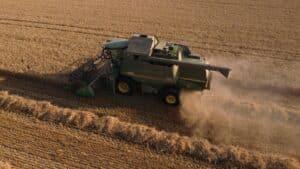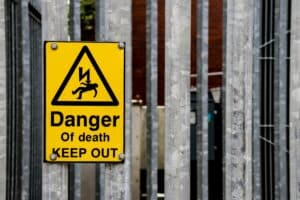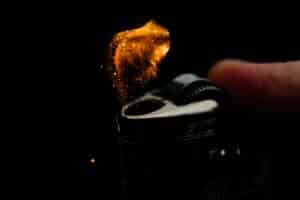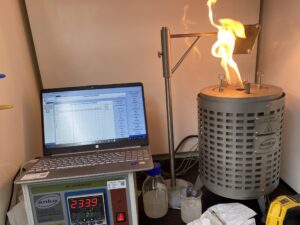We also offer
What Is Go/No-Go Explosibility Screening?
Go/No-Go explosibility screening is a standardized combustible dust testing method used to determine whether a dust cloud can cause an explosion under defined conditions. This screening method assesses if a particular dust is combustible and explosible or non-explosible when tested in a controlled environment.
The test outcome is binary:
-
Go: The dust sample has the potential to cause an explosion.
-
No-Go: The dust sample is non-explosible under the test parameters.
Testing Principle and Methodology
The test takes place in a 20-liter explosion chamber (20L Sphere) that simulates conditions conducive to a dust explosion. Here’s how it works:
-
The operator disperses the dust into the chamber and pressurizes it with air.
-
A 10 kJ chemical ignitor fires to ignite the dust cloud.
-
The technician collects and prepares a representative dust sample, often grinding or processing it to achieve consistent particle size.
According to ASTM guidelines, the dust sample must:
-
Be at least 95% less than 75 microns in size
-
Contain less than 5% moisture
In certain cases, the lab tests the sample as received—particularly when normal operation poses no risk of material segregation.
If you’re unsure how to prepare your sample, contact Prime Process Safety Center for guidance. Most tests use 100 grams of material.
Applicable Standards
Go/No-Go explosibility screening is performed in accordance with:
-
ASTM E1226 – the standard test method for explosibility testing of dust clouds.
Data Interpretation
A dust sample is considered explosible if either of the following criteria is met:
-
Pressure ratio ≥ 2.0
-
Pmax ≥ 0.5 barG
The test helps determine whether more advanced dust explosion testing is necessary. Even as a screening tool, Go/No-Go results are valuable for hazard assessments related to:
-
Combustible dust handling
-
Risk management
-
Process safety
-
Regulatory compliance
When to Perform the Go/No-Go Test
Go/No-Go explosibility screening should be performed in any situation where the explosibility of a dust sample is uncertain. Common triggers for testing include:
-
Material changes
-
Process modifications
-
Regulatory requirements
Testing at the right time helps prevent dust-related incidents and supports ongoing safety in environments where combustible dust is present.
Why Choose Prime Process Safety Center
Prime Process Safety Center is a trusted leader in process safety testing. Here’s why clients rely on us:
- ISO/IEC 17025:2017 accredited laboratory, ensuring the highest level of accuracy, consistency, and technical competence.
-
Experienced laboratory personnel with deep knowledge of dust explosibility and screening procedures.
-
Accurate, reliable, and defensible data that meets both industry expectations and regulatory requirements.
-
Advanced testing equipment ensures precise, sensitive measurement of explosibility parameters.
-
Strict quality control protocols for consistent, repeatable results.
-
Clear data interpretation and guidance, helping you apply the results effectively for your application or compliance needs.
Our mission is to deliver dependable testing services that help you make informed safety decisions.
FAQ
What is Go/No-Go explosibility testing for combustible dust?
Go/No-Go explosibility testing is a standardized procedure used to assess the potential explosibility of a dust sample. It determines whether the dust has the capability to cause an explosion under specific conditions. The test results categorize the dust as either "Go" (potentially explosible) or "No-Go" (non-explosible).
How is Go/No-Go explosibility testing conducted?
The test involves dispersing a dust sample in a controlled environment that simulates conditions favorable for a dust explosion. The sample is introduced into a test chamber, forming a dust cloud, and an ignition source is applied to assess whether the dust ignites or explodes. The outcome categorizes the dust as either "Go" or "No-Go" based on its explosibility.
Why is Go/No-Go explosibility testing important in industries dealing with combustible dust?
Industries handling combustible dust materials require an understanding of the explosion risks associated with these materials. Go/No-Go testing helps in identifying potentially hazardous dusts, enabling the implementation of appropriate safety measures, ventilation systems, and handling procedures to mitigate the risk of dust explosions.
What safety measures should be taken based on the results of Go/No-Go explosibility testing?
Depending on the test results, safety measures might include implementing proper dust control, ventilation systems, explosion prevention and protection methods, and training programs for employees. For "Go" dusts, stringent safety protocols are required, while "No-Go" dusts still demand caution but pose lower risks.
Are there regulatory guidelines or standards related to Go/No-Go explosibility testing?
Yes, regulatory bodies such as OSHA (Occupational Safety and Health Administration) in the US and other international safety agencies provide guidelines for handling combustible dust. Conducting explosibility testing is often a part of compliance with these safety regulations.
















